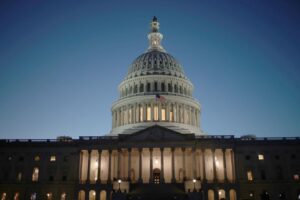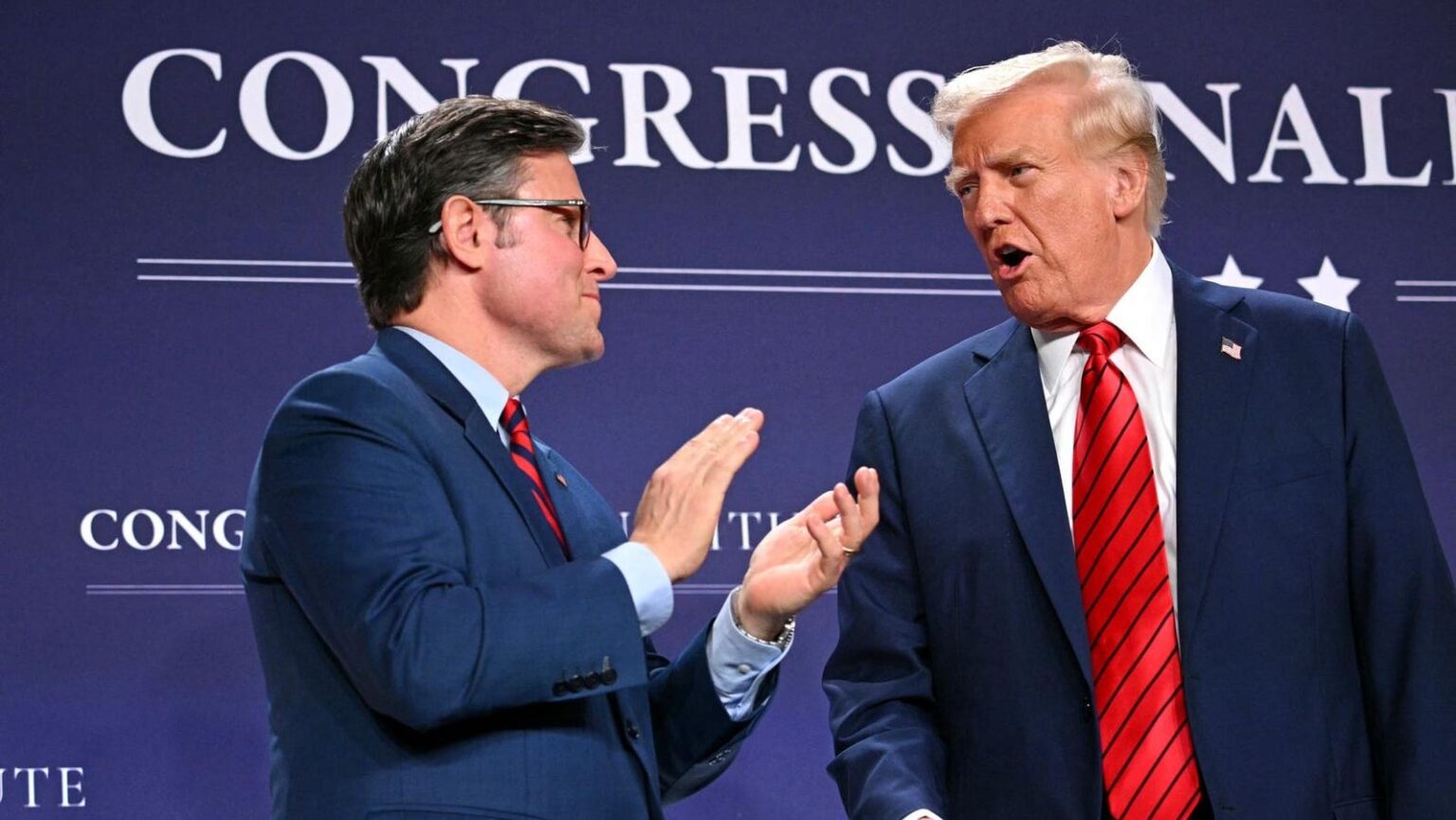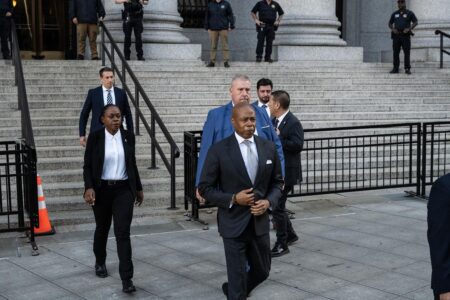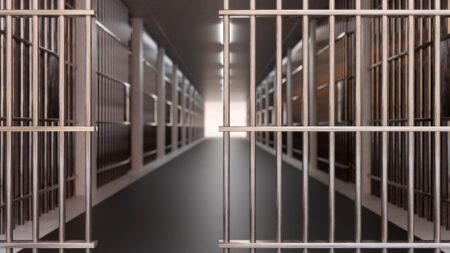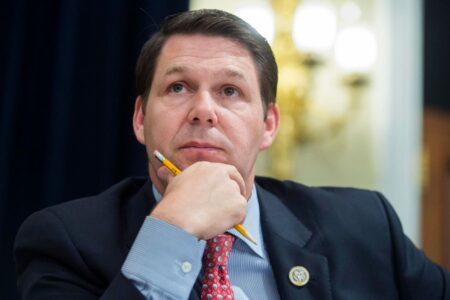Republican lawmakers in Congress are considering a move that could cut off student loan forgiveness for millions of Americans who work in the healthcare industry.
The Public Service Loan Forgiveness program, commonly referred to as PSLF, offers borrowers a pathway to student loan forgiveness if they commit to working in nonprofit or government settings for at least 10 years while repaying their loans. More than a million borrowers have received loan forgiveness under PSLF following a series of reforms and improvements implemented by the Biden administration.
Republican lawmakers in Congress and the Trump administration are considering a number of changes to federal student loan forgiveness programs, including potentially PSLF, to offset the costs associated with extending and expanding major tax cuts that are set to expire this year. They are also considering shuttering the Department of Education. But GOP leaders may not even need to directly target PSLF to cut off access to student loan forgiveness for healthcare workers; a simple change to the tax code that is currently under consideration could be sufficient to block relief for millions of Americans.
PSLF Provides Student Loan Forgiveness Pathway For Nonprofit And Government Workers
PSLF was created by Congress in 2007 through bipartisan legislation signed by President George W. Bush. The program allows borrowers to receive loan forgiveness on any remaining federal student loan balance after 120 qualifying monthly payments, which is the equivalent of 10 years. To be eligible, borrowers must repay a Direct federal student loan under a qualifying repayment plan (typically an income-driven repayment, or IDR, plan) while working as a full-time, W-2 employee, at least 30 hours per week or more, for a qualifying nonprofit or government organization. Most nonprofit organizations designated as a 501(c)(3) organization, such as nonprofit hospitals, would qualify for PSLF.
Because of complicated eligibility rules, poor communication and record-keeping by some student loan servicers, and inadequate oversight by the Department of Education, PSLF suffered from administrative problems and low approval rates for years. At one point, more than 99% of borrowers who applied for loan forgiveness through the program were rejected. But following administrative changes, regulatory updates, and executive actions by the Biden administration intended to improve and expand access, PSLF approvals skyrocketed, with more than a million borrowers approved for student loan forgiveness under PSLF by the end of last year.
Student Loan Forgiveness And Repayment Programs Could Be Targeted To Pay For Tax Cuts
Republican lawmakers in Congress are working on a massive legislative package primarily intended to extend and expand expiring tax cuts for corporations, estates, and individuals. GOP leaders hope to be able to pass the legislation through the budget reconciliation process, which would allow them to bypass the Senate filibuster and enact the legislation through simple party-line majorities in the House and the Senate, which Republicans narrowly control. President Trump would be expected to sign off on any such reconciliation bill.
To offset the costs of the massive tax package, which some estimate could exceed more than $4 trillion, Republican congressional leaders are searching for ways to cut federal spending and raise taxes and revenue elsewhere. According to a memo released by the House Budget Committee last month and obtained by Politico, lawmakers are specifically looking to cut or restrict several student loan forgiveness and repayment programs, including by making unspecified changes to eligibility for the PSLF program. Historically, previous attempts to change or repeal PSLF would have grandfathered in current borrowers; it’s unclear at this time whether that would be the case for the upcoming reconciliation bill, which hasn’t yet been drafted or finalized.
Tax Code Change Could Cut Off Student Loan Forgiveness For Nonprofit Healthcare Workers
But specifically targeting PSLF may not be necessary to block student loan forgiveness for millions of Americans working in healthcare. The same House Budget Committee memo calls for changing the tax code and fully eliminating the nonprofit status of hospitals.
“More than half of all income by 501(c)(3) nonprofits is generated by nonprofit hospitals and healthcare firms,” says the memo. “This option would tax hospitals as ordinary for profit businesses,” resulting in $260 billion in savings over 10 years.
At least 4.8 million Americans work for nonprofit hospitals and associated entities, according to the Kaiser Family Foundation. This includes doctors, nurses, social workers, medical technicians, administrative support staff, and others. Since PSLF is an all-or-nothing program – meaning borrowers cannot receive student loan forgiveness until they complete the 120 qualifying payments and 10 years of qualifying employment — these workers would effectively be cut off from loan forgiveness under PSLF if the nonprofit status of the hospital that employs them is eliminated. Many of these workers may have made decisions to work in a nonprofit healthcare setting specifically to pursue the benefits of the PSLF program.
Healthcare workers wouldn’t necessarily lose PSLF credit that they already were approved for if hospitals are no longer nonprofit entities under the tax code. But they wouldn’t be able to progress further toward student loan forgiveness, unless they find another qualifying PSLF employer. And that may prove to be difficult if all nonprofit hospitals, firms, and related entities lose their tax-exempt status. Working in private practice does not qualify for PSLF, and there are relatively few nonprofit medical providers outside of a hospital or hospital-affiliated settings. Implementing such a dramatic change would have the effect of cutting off millions of healthcare workers from student loan forgiveness under PSLF, with little recourse.
Other Student Loan Forgiveness And Relief Programs Could Be Gutted
The same House Budget Committee memo also calls for the repeal of the SAVE plan, one of the Biden administration’s key student loan relief initiatives that reduced payments for millions of borrowers. Even without the elimination of tax-exempt status for nonprofit hospitals, many borrowers (not just healthcare workers) may see dramatic increases in their monthly payments later this year if the SAVE plan gets eliminated.
Congressional Republicans are also looking for other ways to reduce spending associated with federal student loans and student aid. Targets may include Pell Grants, federal work study programs, the student loan interest deduction, and other student loan forgiveness programs like Borrower Defense to Repayment and Closed School discharges, as well as the Department of Education itself. Lawmakers may also eliminate the federal Direct Graduate PLUS and Parent PLUS loan programs, and may even start taxing scholarships to help raise revenue and offset the costs of extending tax cuts.
Read the full article here


